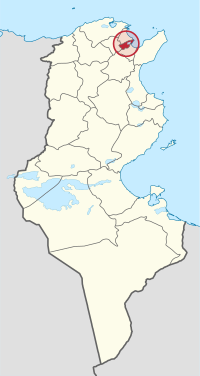
Photo from wikipedia
As coastal areas become increasingly vulnerable to climate change, the study of nearshore sediment textures along the littoral cell of the Medjerda delta in the Gulf of Tunis, southern Mediterranean… Click to show full abstract
As coastal areas become increasingly vulnerable to climate change, the study of nearshore sediment textures along the littoral cell of the Medjerda delta in the Gulf of Tunis, southern Mediterranean coast can provide valuable information (i) on the origin (continental or marine) of the sediment, (ii) its transport direction, and (iii) constitutes an important tool in the assessment of coastal sensitivity. A total of 120 sediments samples underwent grain size analysis and statistic parameters have been calculated. These allowed the identification of five different Sedimentary Types (ST). Accordingly, using grain size indexes (i.e. Mz, SKI and Ku), Sediment Trend Analysis (STA) modeling tools were applied to define the seasonal sediment transport pathways throughout the nearshore of the Medjerda sedimentary cell. Results show that grain size distribution (GSD) and STA model pathways are determined by cross-shore geomorphology, location of the sediment-cell, seasonal incident wave and local terrestrial supply. The appearance in an atypical seabed location of the finer (Mo = 0.1 mm) and the coarser STs (Mo = 0.8 mm) can be indicative of human influence since the coarser particles are usually retained by dam structures. Moreover, the bimodality and the increased distribution of mud are also related to the seasonal incident wave winnowing of the historic deltaic plain submerged by the relative rise in sea level. The evolution of the sediment pattern towards a greater proportion of very fine grains indicates a deficit of sediment supply, particularly of the coarser grains, and demonstrates the coastal vulnerability of the Gulf of Tunis due to anthropic effects.
Journal Title: Journal of Coastal Conservation
Year Published: 2019
Link to full text (if available)
Share on Social Media: Sign Up to like & get
recommendations!